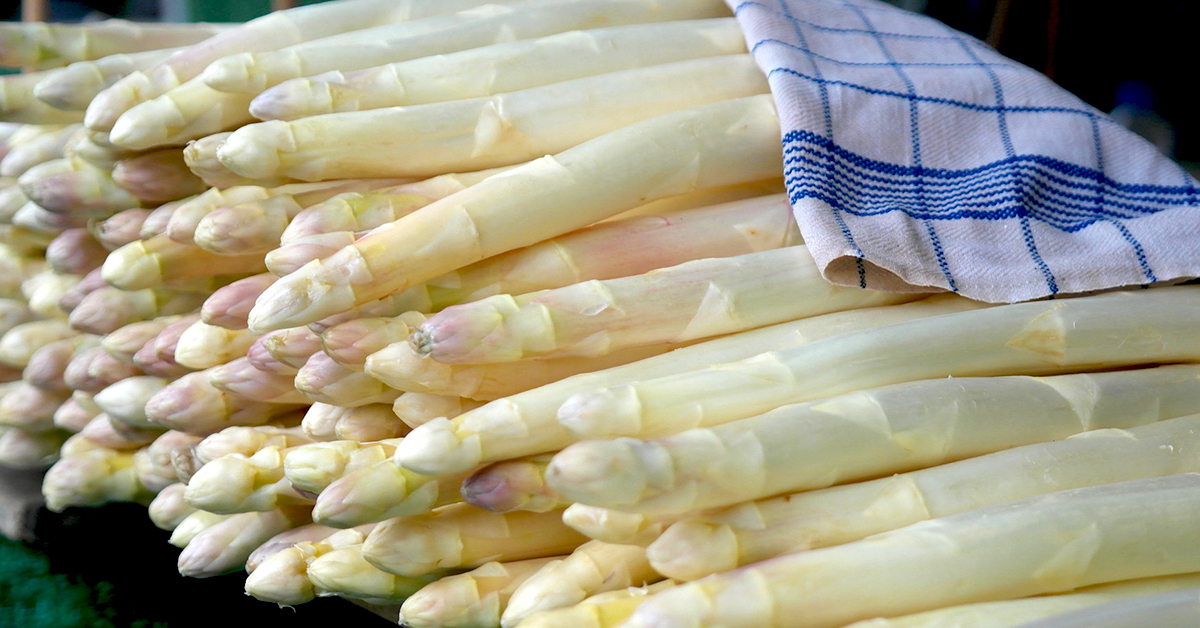Basque ethnography at a glance
Los de abril para mí, los de mayo para el amo y los de junio para ninguno ‘April spears for me, May spears for the master, and June spears for no one’ goes the saying which best describes the optimal times to harvest and consume this spring vegetable: namely, asparagus.
Esparragoa, zainzuria or frantses-porrua is a herbaceous plant, with highly branched aerial stems, and an underground roots and buds system, often referred to as ‘crown’ or ‘claw’. And edible, straight and white spears grow from emerging young shoots.
Its cultivation and uses seem to have originated on the fertile and sandy banks of the Tigris and Euphrates rivers —asparagus derives from the Persian word asparag, which means ‘shoot’—, and there is also evidence of its consumption in Ancient Egypt. Moreover, bunches of asparagus spears were offered to the gods by Egyptians and Greeks of old. And the prolonged settlement of Arabs and Berbers in riverside regions of the Ebro contributed to the expansion of horticultural crops such as asparagus, along with leek, artichoke, spinach…
During the 18th century, asparagus became much appreciated in the diet of the nobility and bourgeoisie, as its consumption was considered a symbol of distinction. However, the first tinned asparagus appeared towards the end of the 19th century, which made this vegetable more broadly available to less favoured social groups. Cultivation of white asparagus, currently the most widely consumed, generalized at about the same time, for only green shoots which poked their heads right through the soil would have been used until then.
Typically a southern food crop, asparagus should be grown in temperate climates, in soils which are neither stony, for spears to emerge clean and straight, nor clayey or too wet, to prevent plants from dying of root asphyxia. Such strict conditions are extraordinarily present in the Ribera of Navarre, asparagus produced there being protected by a specific designation of origin. In the territory of Navarre, as it happens, asparagus has been cultivated intensively since the 1940s, both on irrigated and dry land.
Besides, asparagus would be customarily grown on family farms and rural environments here and there. The relevance acquired by this crop in the coastal town of Bakio, in Bizkaia, did indeed prove remarkable. As Pascual Madoz pointed out in his Dictionary, printed in 1846, Bakio produced “asparagus so thick and exquisite that they were eagerly sought after by nationals and even foreigners”.
In Bakio though, waterlogging of the soil due to abundant rain needed to be addressed, for asparagus plants to grow and develop vigorously, so sand from the beach would be added, thus improving natural soil drainage.
Asparagus seeds were sown around October, in holes up to 25 cm wide, known locally as sotoak, arranged in rows, spacing adjacent rows about a meter apart. Having placed the seeds at the bottom of the hole, they were thereafter covered with compost and sand, forming small mounds.
The first edible spears were obtained after the second year, at the end of spring, before the hot summer sun took over and the mercury soared high. To prevent white asparagus from receiving sunlight and thus turning green, spears needed to be completely buried, so soil and sand were accumulated, again and again, in the highest part of each mound. And simultaneously, they were harvested regularly, up to two or three times a day, depending on the intensity of the sun, in order that they would not lose their prized whiteness. For later conservation, freshly harvested spears were placed in barrels which were filled with water, and the water ought to be changed every day.
The asparagus patch used to occupy a very special area of the vegetable garden, with as much sand as necessary for the delicious spears to thrive, and carefully reserved for them year after year.
Zuriñe Goitia – Anthropologist
Translated by Jaione Bilbao – Ethnography Department – Labayru Fundazioa
Video: Maria Rosario Garai and Virginia Abio (Bakio, Bizkaia).


